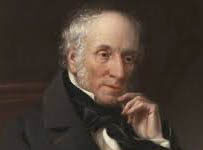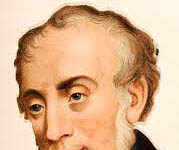The Use of Symbolism in English Poetry
The Use of Symbolism in English Poetry
The Use of Symbolism in English Poetry
Introduction
Symbolism is a literary device that has been employed by poets for centuries to convey deeper and often abstract meanings through the use of symbols. In English poetry, symbolism plays a vital role in enhancing the depth, richness, and complexity of poetic works. Symbolism allows poets to infuse their poems with layers of meaning, making their works open to multiple interpretations. This essay explores the use of symbolism in English poetry, its history, functions, and the various forms it can take.
Historical Context of Symbolism in English Poetry
The use of symbolism in English poetry can be traced back to ancient times. In medieval and Renaissance poetry, allegory was a prevalent form of symbolism, where characters and objects represented abstract concepts or moral virtues. The use of allegory allowed poets to convey moral, religious, or political messages subtly. For example, John Bunyan’s “The Pilgrim’s Progress” is a Christian allegory where characters and places symbolize various aspects of the Christian journey.
However, it was in the 19th and early 20th centuries that symbolism as a literary movement gained prominence. Symbolist poets, such as Charles Baudelaire and Arthur Rimbaud, influenced English poets like W. B. Yeats, T. S. Eliot, and William Butler Yeats. This movement emphasized the use of symbols to represent subjective emotions, inner experiences, and the mysterious and transcendent aspects of life. Symbolist poets aimed to break away from the direct representation of reality and instead delve into the realm of the subconscious and the symbolic.
Functions of Symbolism in English Poetry
Evoking Emotion: One of the primary functions of symbolism in poetry is to evoke deep emotions and create a connection between the reader and the text. Symbols can trigger a wide range of feelings, from joy and love to fear and melancholy, by tapping into the readers’ own experiences and emotions.
Enhancing Ambiguity: Symbols often introduce ambiguity and open the door to multiple interpretations. This encourages readers to engage actively with the text, allowing them to explore various meanings and make personal connections with the poem.
Conveying Complex Ideas: Symbolism enables poets to convey complex and abstract ideas, such as love, death, and the passage of time, in a more accessible and evocative manner. For instance, a rose can symbolize love and beauty, while an hourglass may symbolize the fleeting nature of time.
Providing Unity: Symbols can provide unity to a poem by connecting disparate elements and creating a cohesive structure. They act as threads that weave together the various parts of a poem, giving it a sense of completeness and coherence.
Forms of Symbolism in English Poetry
Visual Symbolism: This form of symbolism uses objects, images, or scenes to represent abstract ideas or emotions. For example, in William Blake’s poem “The Tyger,” the tiger symbolizes the primal, destructive force in humanity.
Natural Symbolism: Nature is a common source of symbols in English poetry. Elements like water, fire, trees, and animals are often used to convey deeper meanings. In Robert Frost’s “The Road Not Taken,” the two roads in the woods symbolize life choices and their consequences.
Religious and Mythological Symbolism: Poets often draw from religious and mythological sources to imbue their works with deeper significance. In John Milton’s “Paradise Lost,” the fall of Satan is a symbol of rebellion and pride.
Human and Body Symbolism: Parts of the human body, such as the heart, eyes, and hands, are frequently used as symbols to represent emotions, desires, or human experiences. In John Donne’s “The Flea,” the flea is a symbol of sexual desire and union.
Color Symbolism: Colors can have various connotations and are often used symbolically. For instance, in literature, red can symbolize passion or anger, while blue may represent tranquility or sadness.
Examples of Symbolism in English Poetry
“The Road Not Taken” by Robert Frost: In this poem, the two diverging roads symbolize life choices and the uncertainty of the future.
“The Red Wheelbarrow” by William Carlos Williams: The red wheelbarrow and the white chickens symbolize the simplicity and beauty of everyday life.
“The Raven” by Edgar Allan Poe: The raven is a symbol of grief and loss in this famous poem, haunting the narrator with its repetitive cry of “Nevermore.”
“The Love Song of J. Alfred Prufrock” by T. S. Eliot: The yellow fog and the evening spread out against the sky are symbols of urban isolation and alienation.
Conclusion
Symbolism is a powerful tool in the hands of English poets, allowing them to convey complex emotions, ideas, and experiences in a condensed and evocative form. From the allegorical works of the past to the symbolist movement of the 19th and 20th centuries, symbolism has remained a fundamental aspect of English poetry. By using symbols, poets engage their readers on a deep and emotional level, encouraging them to explore the hidden layers of meaning within a poem. Symbolism adds depth, richness, and a touch of mystery to the world of English poetry, making it a vital and enduring element of literary expression. 0 0 0.
The Use of Symbolism in English Poetry
You May Like:
Additional Searches:











